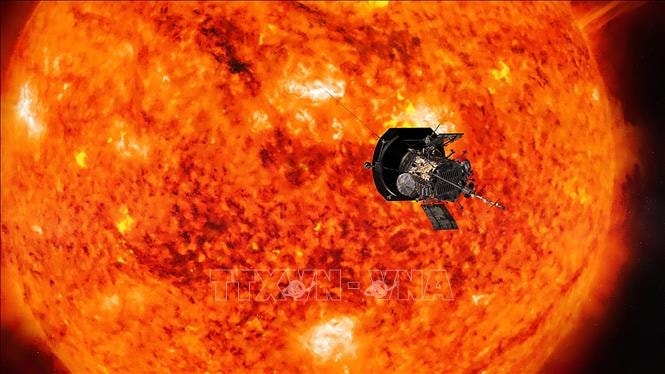The US National Aeronautics and Space Administration (NASA) announced that the Parker Solar Probe has returned safely after the closest approach to the Sun that humanity has ever achieved.

On December 24, the Parker Solar Probe flew within 6.1 million kilometers of the Sun’s surface, entering deep into the corona, the outer atmosphere of the Sun. This is a breakthrough step in the journey to explore the mysteries of Earth’s closest star.
According to NASA, the Parker Solar Probe reached an incredible speed of up to 692,000 km/h, while enduring temperatures of up to 982 degrees Celsius. These are the most extreme conditions that humans have ever conquered in space. The operating team at the Johns Hopkins Applied Physics Laboratory (in Maryland, USA) received a signal from the spacecraft just before midnight on December 26, confirming that the spacecraft was operating normally. NASA expects the Parker Solar Probe to send detailed data on its status on January 1, 2025.
The Parker Solar Probe mission has allowed scientists to directly measure phenomena in the solar corona for the first time, answering big questions such as how matter in the region is heated to millions of degrees, the origin of the solar wind and how energetic particles are accelerated to near-light speeds. "We are rewriting what we know about how the Sun works, thanks to the data from this mission," said Dr. Joseph Westlake, NASA's director of solar physics.
The Parker Solar Probe mission has been conceived since the 1950s. It launched in 2018, with flybys of Venus serving as “gravitational levers” to gradually reduce its distance from the Sun. NASA is now preparing for additional approaches in the extended phase of the mission. Dr. Westlake hopes to collect data from unique phenomena that will help humanity better understand the central star of the solar system.